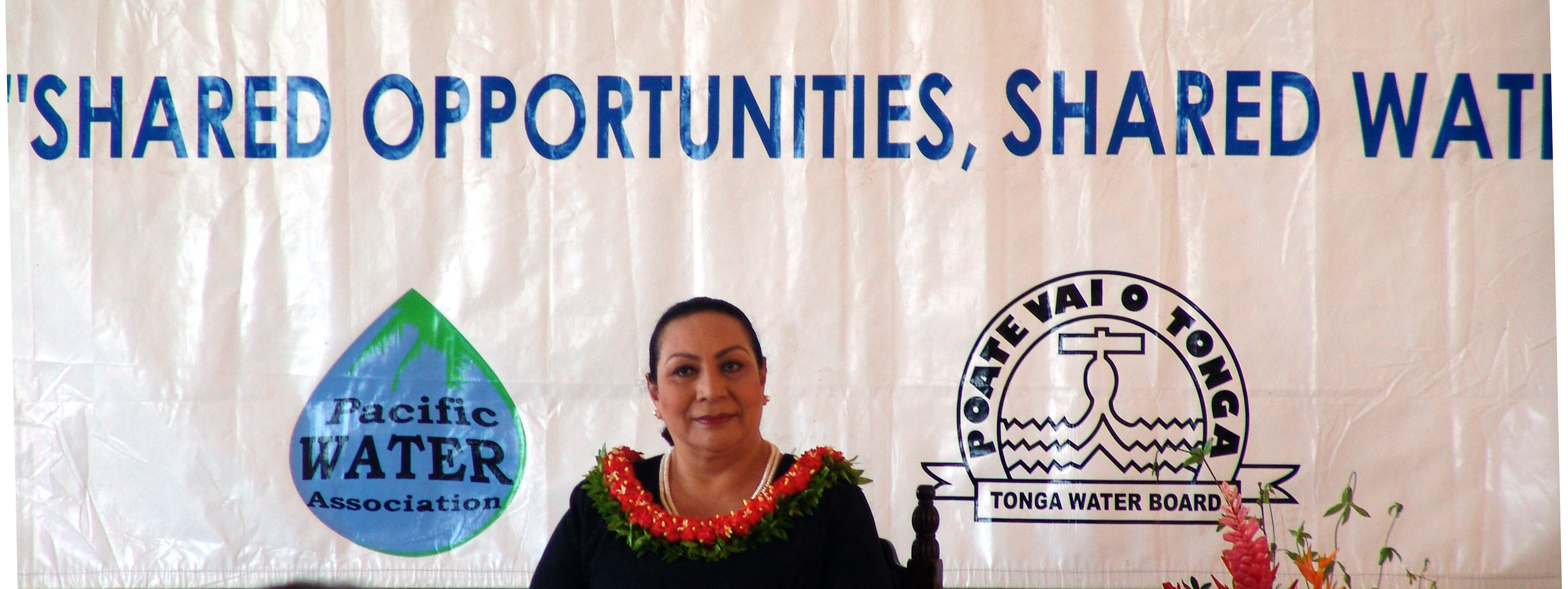News
YES | 1 | YES
PWWA Conference and Expo Outcomes
24 August, 2011


HRH Princess Salote Mafile’o Pilolevu Tuita during the Opening Ceremony. (Source: Alan Freshwater)
The recent Pacific Water & Wastes Association (PWWA) Conference & Expo held in Vava’u, Tonga from 30th July to 3rd August brought together key officials from most Pacific Water utilities, as well as industry partners and donor agencies such as WHO, ADB, SOPAC and the EU.
The event was highly successful and provided the opportunity for Pacific water utility officials to share their experiences and challenges with each other to collectively decide on a way forward. Key identified needs for utilities to focus on, include improving performance and reducing non-revenue water (water lost from the system through leakage, theft or metering inaccuracies), while providing quality service and safe drinking water to communities.
One of the major outcomes of the conference proposed to address these challenges is the draft PWWA Action Plan for 2009 – 2012. Developed in consultation with member utilities, the Action Plan provides guidance and direction for Pacific water utilities and outlines many of the challenges necessary to be addressed in key result areas such as financial management, staff capability, and service delivery.
As an important part of the Action Plan, the PWWA proposes to revive the process of benchmarking for Pacific water utilities. Through collection and use of accurate, reliable data, benchmarking will assist in improving utility performance, the establishment of effective asset management procedures, and will inevitably lead to improved efficiency and cost savings for utilities.
Following the conference, a “Drinking Water Safety Planning - Lessons Learnt” Workshop was held on the 3rd August. This full day workshop provided an important opportunity for pilot and replication countries under the Drinking Water Safety Planning (DWSP) Programme to present on their progress, reflect on the issues and key outcomes of the drinking water safety planning process, and discuss their experiences and challenges arising in their individual countries from the practical implementation of the DWSP risk management approach for water supply systems.
Following the meeting in Vava'u Tonga a lessons learned flyer was produced and can be downloaded here: Pacific Drinking Water Safety Planning Lessons Learned Flyer
The event was highly successful and provided the opportunity for Pacific water utility officials to share their experiences and challenges with each other to collectively decide on a way forward. Key identified needs for utilities to focus on, include improving performance and reducing non-revenue water (water lost from the system through leakage, theft or metering inaccuracies), while providing quality service and safe drinking water to communities.
One of the major outcomes of the conference proposed to address these challenges is the draft PWWA Action Plan for 2009 – 2012. Developed in consultation with member utilities, the Action Plan provides guidance and direction for Pacific water utilities and outlines many of the challenges necessary to be addressed in key result areas such as financial management, staff capability, and service delivery.
As an important part of the Action Plan, the PWWA proposes to revive the process of benchmarking for Pacific water utilities. Through collection and use of accurate, reliable data, benchmarking will assist in improving utility performance, the establishment of effective asset management procedures, and will inevitably lead to improved efficiency and cost savings for utilities.
Following the conference, a “Drinking Water Safety Planning - Lessons Learnt” Workshop was held on the 3rd August. This full day workshop provided an important opportunity for pilot and replication countries under the Drinking Water Safety Planning (DWSP) Programme to present on their progress, reflect on the issues and key outcomes of the drinking water safety planning process, and discuss their experiences and challenges arising in their individual countries from the practical implementation of the DWSP risk management approach for water supply systems.
Following the meeting in Vava'u Tonga a lessons learned flyer was produced and can be downloaded here: Pacific Drinking Water Safety Planning Lessons Learned Flyer
















